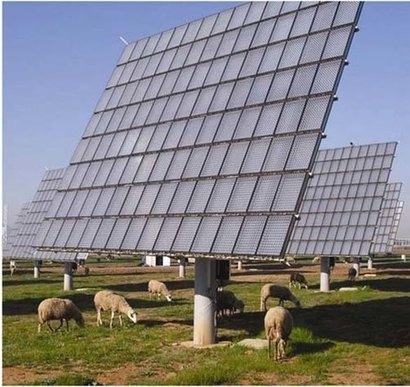
The report, by Frost & Sullivan’s Energy & Environment team, examines the continued rise of renewable energy systems around the world. Global Power Industry Outlook, 2017, a new analysis from Frost & Sullivan’s Power Generation Growth Partnership Service programme, examines power market trends, including installed capacity, investment, and regional growth across coal-fired, gas-fired, nuclear, hydro, solar PV, wind and biomass power.
Prices for both solar and wind continue to decline enabling a boom in investment in renewable energy at the expense of traditional power generation. Lower project costs and continued regulatory support for renewable energy in key markets will see global renewable power investment reach $243.1 billion in 2017, with solar photovoltaic (PV) the fastest growing segment, followed by wind power. By 2020, non-hydro renewables will account for 65 percent of global power investment.
India is the hottest growth market with renewable investment set to increase by 24 percent per year to 2020. The evolving market will compel power sector participants to craft innovative business models, offer customer-centric solutions, and create flexible portfolios. There will also be higher consolidation as companies seek funding to expand and introduce novel products.
“As new geographies emerge, local legislation and pro-renewable incentives will impact the fuel mix, compelling industry participants to identify challenges and define localisation strategies for long-term growth” said Energy & Environment Principal Consultant Jonathan Robinson. “As the renewable and distributed energy markets mature, a large installed capacity of equipment that needs servicing will also offer the operation and maintenance sector attractive growth prospects.”
Mr Robinson added that digitisation has the potential to drive efficiency gains and unlock new revenue streams for market participants in business areas such as demand response, utility as an energy service company or ESCO, predictive and real-time analytics, vehicle to grid, and virtual power plants and microgrids, however, implementation will take time and significant investment.
The global power industry is seeing a number of key trends. These include continuing transition to more decentralised and intelligent energy systems and demand from utilities for energy management solutions, on both the supply and demand sides. The solar PV sector is experiencing high growth rates, with investment forecast to increase by 11.5 percent to $141.6 billion in 2017. International agreements, such as COP21, and declining renewable technology costs, will ensure more capacity per dollar invested.
China will be the largest market in terms of solar revenue investment, but the fastest growth will come from India, which will see double-digit growth in investment to 2020. The 73.4 percent of power generation investment in Europe will be for renewable technologies, while Russia and CIS focus on nuclear and hydro.
Despite an overall increase in global coal capacity, investment in coal is now firmly on a downward trend. New business models that incentivise smarter consumption patterns, coupled with growth of energy storage technologies, will reduce the need for peak capacity investment in mature energy markets.
For additional information:

